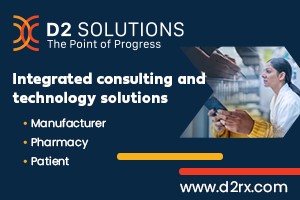The idea of being a purpose-led organization has been with us for over a decade. IBM’s “Smarter Planet” initiative was introduced in 2008. IBM is recognized as being one of the first B2B companies to differentiate on a larger purpose rather than only on their products and services, and to integrate this larger purpose into day-to-day business practices.
This is an important point. Not every organization views purpose as an all-encompassing idea. Far too many organizations are missing this critical component. They may tout responsible healthcare or medical science practice, and implement messaging about caring for employees and patients, the healthcare ecosystem, the environment, or community involvement.
But in the words of Jim Stengel, former CMO of Proctor & Gamble, purpose-led “is not corporate social responsibility, it’s not cause marketing, and it’s not a strategy for philanthropy; it’s a business strategy.”
And leaders in healthcare and the life sciences are no different. In their March 2022 article, McKinsey emphasized that “leaders in the life sciences industry have long experimented with workplace design to promote innovation and collaboration and to accelerate novel drug and therapy development.” To improve, performance organizations should consider their specific overall purpose and mission for guidance in rethinking their future workplaces.
Let’s explore four components for how to integrate purpose-led into your growth strategy:
- What it means to be a purpose-led organization
- The remarkable purpose-led proof points
- The important Intersection between strategy and purpose
- Seven powerful ways to achieve pervasive purpose via strategic planning
What it Means to be a Purpose-Led Healthcare, Pharma, and Medical Device Organization
To be purpose-led is relatively simple to state but much harder to activate. To be purpose-led means that the values of your organization drive decisions, behavior, and culture. That it’s pervasive. Let’s clarify three interrelated but different terms: Vision, Mission, and Purpose
- Vision identifies where you are going, what your business wants to achieve. Your vision paints a picture of what the future looks like when your goals are achieved. Vision provides a view into how your company will define success, preferably in customer-centric terms.
- Mission articulates how you will achieve the vision. Mission defines the milestones and goals that will enable you to make your vision tangible.
- Purpose is your why, and at its essence, purpose encompasses the core values of your organization. It is what inspires you and everyone else, (employees, customers, suppliers, etc.) associated with your company. It is why your organization creates the solutions it offers. Why people should and do show up at your company. Why your company pursues some opportunities and customers. Why you would avoid, or turn down, other opportunities.
What are the Remarkable Purpose-Led Proof Points?
Integrating purpose-led principles and strategy takes effort. But the effort is worthwhile. A study by the New York Times found that purpose makes people 3 times more likely to stay in an organization, leading to 1.4 times more employee engagement, and employee optimism levels double. It also creates 75% more customer retention.
Thomas Malnight, Ivy Buche and Charles Dhanaraj talked with C-level executives at 28 companies—in the United States, Europe, and India—that had had an average compound annual growth rate of 30% or more in the previous five years. They found that purpose played two important strategic roles: It helped companies redefine the playing field, and it allowed them to reshape the value proposition, and promote a positive brand image that leads to higher brand equity.
And that, in turn, enabled these companies to overcome the challenges of slowing growth and declining profitability.
The key to success with purpose-led strategies for healthcare, pharma, and medical device organizations is to demonstrate how your services and products create and deliver on the purpose. That’s where strategy plays a crucial role.
The Important Intersection Between Strategy and Purpose
Strategy brings your vision and mission to life. It dictates priorities and how resources will be allocated and mobilized. Strategy is about choices. It serves as a filter, enabling us to separate unwanted choices from wanted choices. And as a result, these choices drive our decisions. Effective leaders also filter all business decisions through the shared core values created of the organization, that is your purpose.
Purpose and strategy intersect in the realm of decision-making. By using purpose and strategy together as your primary decision-making filter you can ensure that your decision is in alignment with both.
7 Powerful Ways to Achieve Pervasive Purpose via Strategic Planning
How do you bring the two together? The first step is to embed purpose into your strategic planning process. weaving in the answers to these questions:
- Does our core value proposition reflect our purpose? If not, what needs to be changed?
- How does our purpose make us more customer-centric?
- How does our purpose contribute to our growth?
- How will we make sure our chosen growth strategies reflect our purpose?
- How can we use our purpose to guide our investments?
- What organizational capabilities do we need to add/change to support our purpose?
- How will we incorporate purpose into our decision-making process?
We encourage you to embed purpose-led into your growth strategy. Make sure your purpose-led strategies meet these criteria:
- Are fully aligned with the company vision, mission, purpose, and objectives.
- Deliver on the goal of achieving customer-centric growth.
- Help identify, quantify, and drive new opportunities, and new process initiatives to support growth.
- Are measurable; data-driven; set priorities; take company strengths, weaknesses, opportunities, and threats into account to achieve competitive advantage; and incorporate customer experience and value.
Bio –
If you’re looking for a practical, no-nonsense proven approach to accelerate growth, create value, and improve performance, then you’ve connected with the right person. Laura Patterson is a recognized and trusted authority for enabling companies to take a customer-centric outcome-based approach to organic growth by enabling them to use analytics, accountability, alignment, and operational excellence to attract, retain and grow the value of customers. Laura began her 25+ year career in sales and had the great fortune of working across functions spanning customer relationship management, strategic and product marketing, analytics, and marketing operations. Today she is at the helm of VisionEdge Marketing, founded in 1999, and is recognized as one of the pioneers in MPM. She received a patent for the Accelance® methodology designed to connect activities and investment to business results. She has published four books, with the recent Fast-Track Your Business: A Customer-Centric Approach to Accelerate Market Growth receiving industry acclaim. Laura is frequently asked to speak and facilitate workshops for educational institutions, associations, and company meetings. Laura has been recognized for her thought leadership and has won numerous awards, including Engati’s Top 30 Marketing Influencers and Top 200 Thought Leaders, Piktale’s Top 100 Influencers, and 20 Women to Watch in Business by the Sales Lead Management Association












